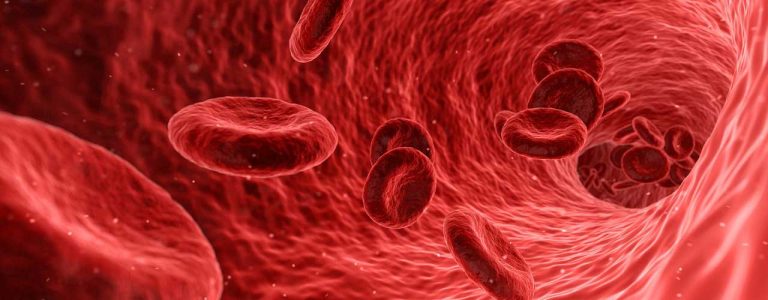When is it alcohol abuse, and when is it alcohol addiction? There is no black-or-white answer to this question – it is instead helpful to consider a number of factors when diagnosing alcohol addiction. Of course, this is always best done by a trained professional – this blog is designed to be a guide, rather than a definitive diagnostic manual.
Related: Rehab Southern California
Alcohol addiction, often referred to as alcoholism and more and more recently referred to as alcohol use disorder (AUD), is a chronic disease that is characterized by persistent drinking despite efforts to stop.[1] There are many distinct differences between alcohol abuse, which is characterized by excessive drinking, and alcohol use disorder – this develops as a result of alcohol abuse[2].
Heavy Drinking and Binge Drinking
Binge drinking is an issue which affects the lives of millions of Americans. It is also the most common, costly, and deadly pattern of excessive alcohol use in the United States. Binge drinking has seen many definitions to describe what constitutes excessive alcohol consumption, but the Center for Disease Control (CDC) defines binge drinking as drinking enough alcohol to raise your blood alcohol content to a level above 0.08 g/dl. This typically means consuming five or more drinks in one sitting for men, or four or more drinks in one sitting for women. They also note that most people who binge drink do not have a severe alcohol use disorder, but that binge drinking can increase the risk of developing alcohol use disorder.
One in every six adults in the United States engages in binge drinking at least once per month, consuming on average roughly seven drinks per binge.[3] Binge drinking also disproportionately affects men, with twice as many men participating in binge drinking than women, and four out of every five binge drinks being consumed by men. Popular among households with an income of over $75,000 per year, as well as lower income brackets and people under the age of 21, binge drinking is a widespread issue.[4]
The risks of binge drinking can be extremely serious, and lead to health complications as well as bodily injury. Some of the risks associated with binge drinking include:[5]
- Unintentional injuries related to loss of mobility and balance, vehicle collisions, and alcohol poisoning
- Violence including, but not limited to; physical assault, homicide, sexual assault and rape, and suicide
- Unwanted sexual interactions, and sexually transmitted diseases[6]
- Accidental pregnancy as well as pregnancy complications including but not limited to; miscarriage, stillbirth, fetal alcohol syndrome[7], and sudden infant death syndrome
- Chronic diseases, including but not limited to; heart disease, stroke, high blood pressure, and liver disease
- Increased risk of cancer, including but not limited to; breast cancer, colon cancer, mouth cancer, liver cancer, pancreatic cancer[8] and colon cancer
- Cognitive troubles related to memory and learning[9]
- Alcohol use disorder
Alcohol use disorder can develop through binge drinking,. Although binge drinking is popular in the United States, the official advice is to not engage in binge drinking under any circumstances, due to the risks and possible health complications associated with it.
What Constitutes Alcohol Abuse?
A persistent pattern of alcohol abuse can lead to the development of an alcohol use disorder, so it is imperative that the signs of alcohol abuse can be identified before they spiral out of control. The Center for Disease Control and Prevention (CDC) defines a drinking problem as something that causes trouble in relationships, in school, in social activities, or in how you think and feel.[10] Alcohol abuse generally stems from binge drinking, but as alcohol affects people in different ways, there are many easy for alcohol consumption to become alcohol abuse. Not all of those who binge drink engage in alcohol abuse. Some of the signs of alcohol abuse include:
- Inability to maintain responsibilities relating to work or school, with regard to punctuality, performance, and disciplinary actions
- Drinking alcohol while performing dangerous tasks, such as driving a vehicle or operating heavy machinery
- Legal issues that arise as a result of heavy, excessive, or frequent alcohol consumption
- Persistent drinking despite adverse effects of alcohol consumption in other areas of life including but not limited to; romantic relationships, family life, and physical health
Alcohol abuse generally does not affect life as severely as alcoholism does, but problems related to alcohol abuse are still likely to occur. Alcohol abuse can be detrimental and can have negative effects on a person’s physical health, mental well-being, and life choices. If someone’s alcohol abuse continues for a prolonged period of time, they put themselves at an increased risk for developing alcoholism. The good news is that for those who engage in alcohol abuse, changing habits is much easier[11]. Those who engage in alcohol abuse are generally less inclined to ignore the adverse effects of their alcohol consumption. They can take in external stimuli and decide to change their behaviors based on the negative effects of their alcohol consumption in their life.
For those who suffer from alcoholism, the adverse effects of their alcohol consumption may be even more severe and more apparent, but they continue to drink despite this.
Developing a Physiological Dependence on Alcohol
Alcohol abuse typically leads to an alcohol use disorder once a physiological dependence on alcohol has formed. People with a dependence on alcohol will generally show most of the following symptoms:[12]
A tolerance builds up due to consistent alcohol use, and usually becomes higher if someone consumes large amounts of alcohol. Other factors such as ethnicity, gender, and body composition can affect a person’s ability to break down alcohol within their system.
After eight hours without a drink, those with a dependence usually begin to feel withdrawal symptoms, which may be at their most severe within one to three days without a drink. The physical symptoms of withdrawal include irritability, tremors, mood swings, and general discomfort.
- Drinking to alleviate withdrawal symptoms
In order to avoid or relieve the physical symptoms of withdrawal, those with a dependence on alcohol will continue to consume alcohol. This is often apparent in those who continue drinking the morning after a night of heavy consumption.
Serious cravings for alcohol, and the awareness of those cravings, can be a sign of dependence.
- Consuming large amounts of alcohol
Even if efforts are made to cut down on the frequency, and amount, of alcohol consumed, those with a dependency generally have trouble controlling the amount of alcohol that they drink.
Seeking Help for Alcohol Abuse or Alcohol Use Disorder
Left untreated, issues with alcohol can continue to develop and cause serious complications to someone’s physical health, as well as their mental well-being. In order to address problems with alcohol as they occur, knowing the warning signs of alcohol abuse and alcohol use disorder can help to treat problems before they spiral out of control. Having trouble controlling the frequency and amount of alcohol that you drink could be an early indicator of struggles with alcohol. If you or a loved one is suffering from, or showing signs of, alcohol use disorder please INSERT TREATMENT CENTER NAME for more information.
[1] Rinn, W., Desai, N., Rosenblatt, H. and Gastfriend, D., 2002. Addiction Denial And Cognitive Dysfunction: A Preliminary Investigation. [online] Neuro.psychiatryonline.org. Available at: <https://neuro.psychiatryonline.org/doi/pdfplus/10.1176/jnp.14.1.52>
[2] GRANT, BRIDGET. “Journal Of Substance Abuse | All Journal Issues | Sciencedirect.Com By Elsevier”. Sciencedirect.Com, 2020, https://www.sciencedirect.com/journal/journal-of-substance-abuse/issues.
[3]Cdc.gov. 2019. Binge Drinking Is A Serious But Preventable Problem Of Excessive Alcohol Use | CDC. [online] Available at: <https://www.cdc.gov/alcohol/fact-sheets/binge-drinking.htm>
[4] Cdc.gov. 2019. Binge Drinking Is A Serious But Preventable Problem Of Excessive Alcohol Use | CDC. [online] Available at: <https://www.cdc.gov/alcohol/fact-sheets/binge-drinking.htm>
[5] Cdc.gov. 2019. Binge Drinking Is A Serious But Preventable Problem Of Excessive Alcohol Use | CDC. [online] Available at: <https://www.cdc.gov/alcohol/fact-sheets/binge-drinking.htm>
[6] ZENILMAN, JONATHAN M. et al. “Alcohol And Other Substance Use In STD Clinic Patients”. Sexually Transmitted Diseases, vol 21, no. 4, 1994, pp. 220-225. Ovid Technologies (Wolters Kluwer Health), doi:10.1097/00007435-199407000-00008.
[7] Elliott, Elizabeth J et al. “Diagnosis Of Foetal Alcohol Syndrome And Alcohol Use In Pregnancy: A Survey Of Paediatricians’ Knowledge, Attitudes And Practice”. Journal Of Paediatrics And Child Health, vol 42, no. 11, 2006, pp. 698-703. Wiley, doi:10.1111/j.1440-1754.2006.00954.x.
[8] Ye, W et al. “Alcohol Abuse And The Risk Of Pancreatic Cancer”. Gut, vol 51, no. 2, 2002, pp. 236-239. BMJ, doi:10.1136/gut.51.2.236.
[9] Sullivan, E. V., and A. Pfeffer Baum. “Neuroimaging Of The Wernicke-Korsakoff Syndrome”. Alcohol And Alcoholism, vol 44, no. 2, 2009, pp. 155-165. Oxford University Press (OUP), doi:10.1093/alcalc/agn103.
[10] Cdc.gov. 2020. Alcohol Questions And Answers | CDC. [online] Available at: <https://www.cdc.gov/alcohol/faqs.htm#alcoholismAbuse> [Accessed 9 October 2020].
[11] Bertholet, Nicolas. “Reduction Of Alcohol Consumption By Brief Alcohol Intervention In Primary Care”. Archives Of Internal Medicine, vol 165, no. 9, 2005, p. 986. American Medical Association (AMA), doi:10.1001/archinte.165.9.986.
[12] National Institute on Alcohol Abuse and Alcoholism (NIAAA). 2020. Alcohol Use Disorder: A Comparison Between DSM–IV And DSM–5. [online] Available at: <https://www.niaaa.nih.gov/publications/brochures-and-fact-sheets/alcohol-use-disorder-comparison-between-dsm>






